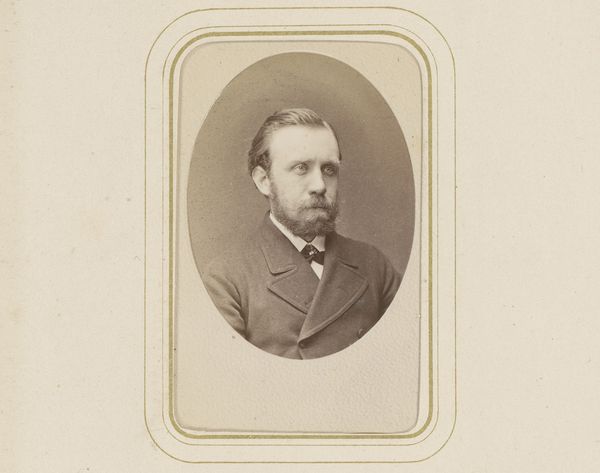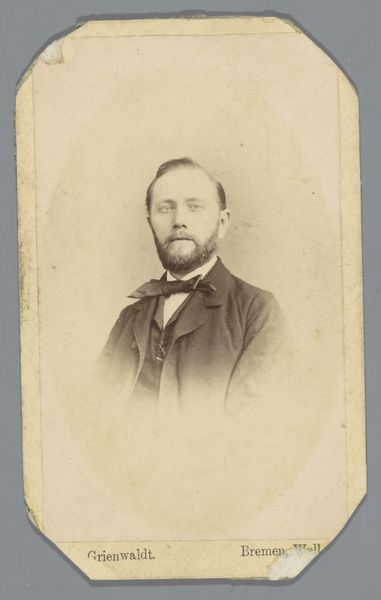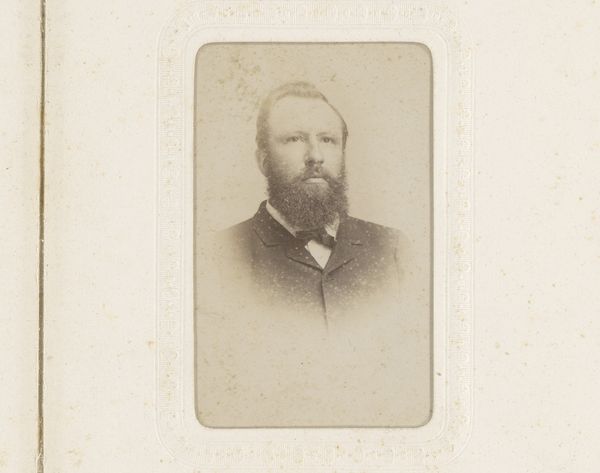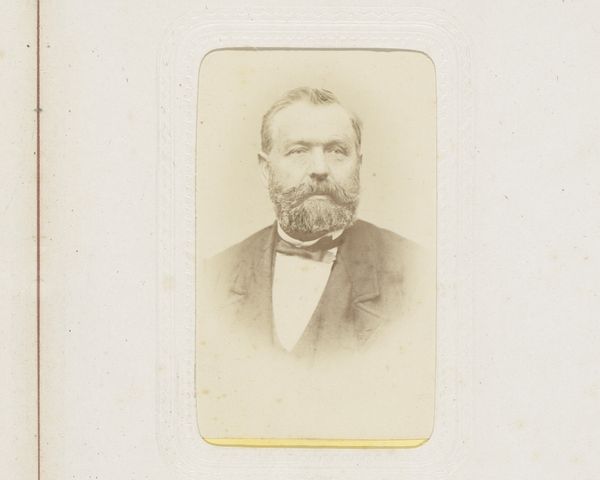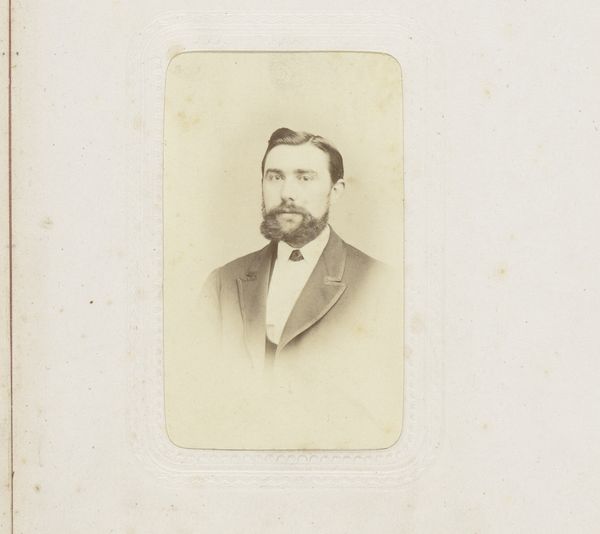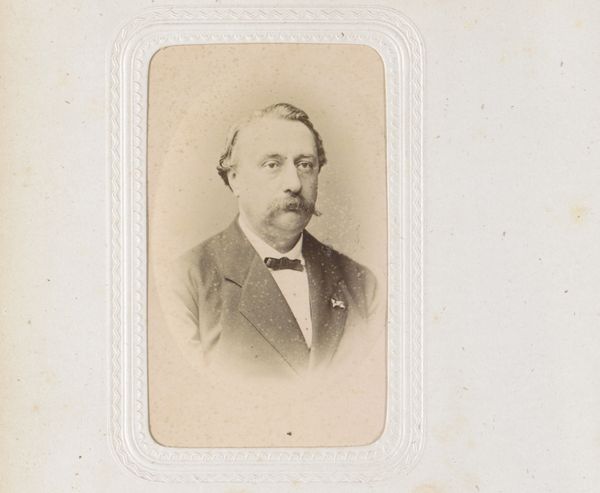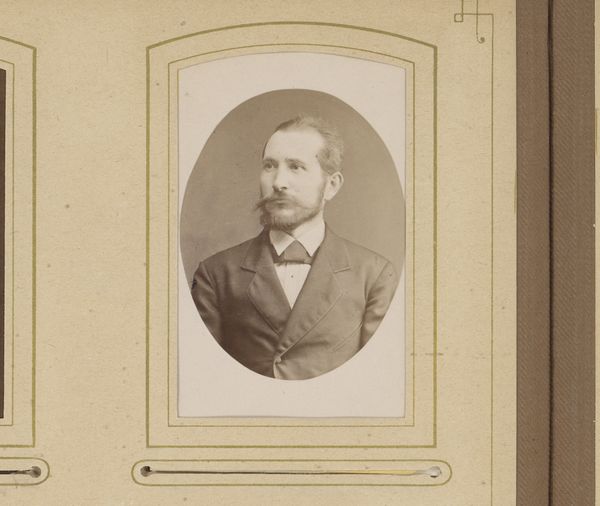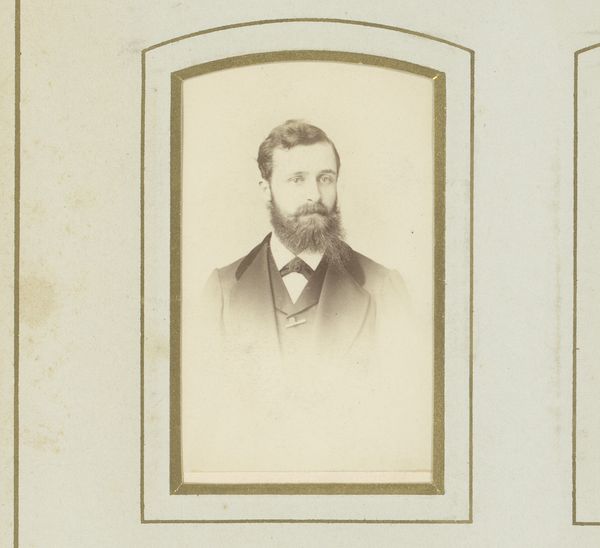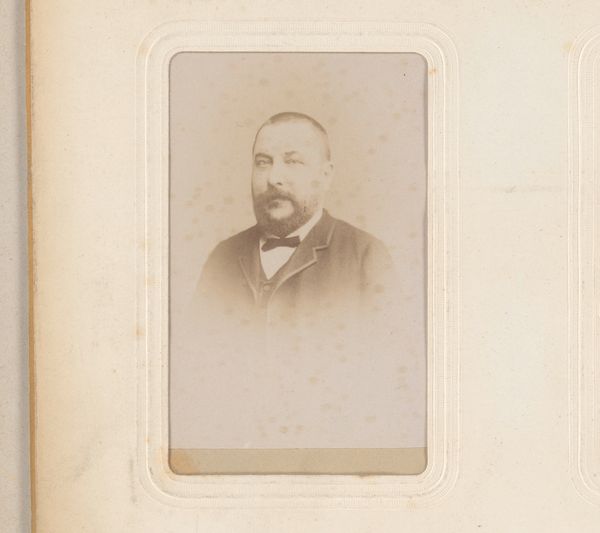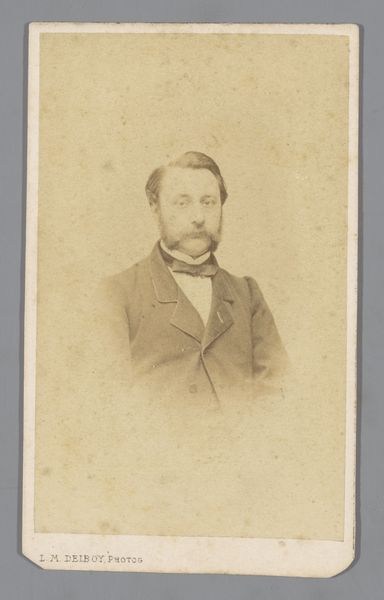
Dimensions: height 87 mm, width 53 mm
Copyright: Rijks Museum: Open Domain
Editor: Here we have a photograph entitled "Portret van een man met snor en baard," placing it between 1850 and 1885, and attributed to Moriz Ludwig Winter. The medium is listed as gelatin silver print. What strikes me is how much the materiality of the photograph itself contributes to the image, the textures in the border, for example. What can you tell me about it? Curator: For me, the real interest lies in the process. The gelatin silver print was a significant technological advancement, making photography more accessible and reproducible. Think about the labour involved, from the photographer to the workers producing the photographic paper. Consider also the consumption of photography during this period, its relationship to burgeoning industries of leisure, self-representation, and visual culture. Why choose this method over another, perhaps older technique? What kind of class position would this suggest of the subject? Editor: That's interesting. I hadn't considered the socio-economic implications of choosing this specific process. It feels quite distant from painting somehow. Curator: Does it? I challenge that boundary. What about the chemicals required, mined and manufactured, that went into the photograph's production? Those are materials we often overlook, yet they underpin the image itself, just like pigments in paints, extracted and refined, are so much more than mere "color." This material reality gives us something concrete, beyond representation, to ground our understanding in. Editor: So you're saying that looking at the materials and methods reveals the economic and social forces at play? Curator: Precisely. By understanding the materiality of the image, we can move beyond simply identifying its subject and toward understanding the broader social conditions that made its production, dissemination, and consumption possible. What stories can this image tell us if we only change our method of viewing it? Editor: This makes me consider how art is rarely viewed from such perspectives and how crucial it is for truly understanding any era, thanks! Curator: Indeed, by examining labor, materiality and consumption in art history, we bring to the foreground the social, cultural, and economic relations inherent to it.
Comments
No comments
Be the first to comment and join the conversation on the ultimate creative platform.
